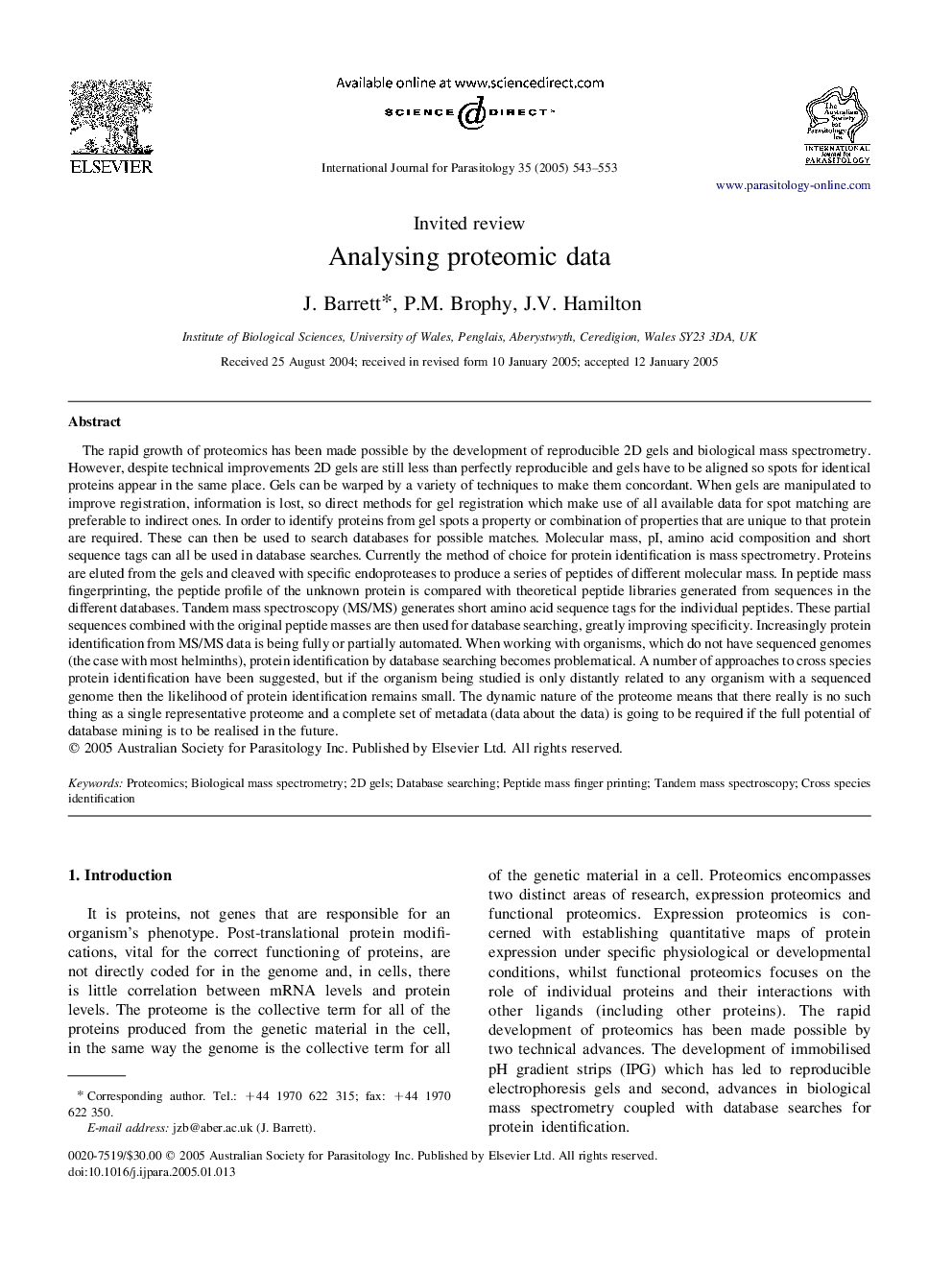| کد مقاله | کد نشریه | سال انتشار | مقاله انگلیسی | نسخه تمام متن |
|---|---|---|---|---|
| 8979713 | 1107342 | 2005 | 11 صفحه PDF | دانلود رایگان |
عنوان انگلیسی مقاله ISI
Analysing proteomic data
دانلود مقاله + سفارش ترجمه
دانلود مقاله ISI انگلیسی
رایگان برای ایرانیان
کلمات کلیدی
موضوعات مرتبط
علوم زیستی و بیوفناوری
ایمنی شناسی و میکروب شناسی
انگل شناسی
پیش نمایش صفحه اول مقاله

چکیده انگلیسی
The rapid growth of proteomics has been made possible by the development of reproducible 2D gels and biological mass spectrometry. However, despite technical improvements 2D gels are still less than perfectly reproducible and gels have to be aligned so spots for identical proteins appear in the same place. Gels can be warped by a variety of techniques to make them concordant. When gels are manipulated to improve registration, information is lost, so direct methods for gel registration which make use of all available data for spot matching are preferable to indirect ones. In order to identify proteins from gel spots a property or combination of properties that are unique to that protein are required. These can then be used to search databases for possible matches. Molecular mass, pI, amino acid composition and short sequence tags can all be used in database searches. Currently the method of choice for protein identification is mass spectrometry. Proteins are eluted from the gels and cleaved with specific endoproteases to produce a series of peptides of different molecular mass. In peptide mass fingerprinting, the peptide profile of the unknown protein is compared with theoretical peptide libraries generated from sequences in the different databases. Tandem mass spectroscopy (MS/MS) generates short amino acid sequence tags for the individual peptides. These partial sequences combined with the original peptide masses are then used for database searching, greatly improving specificity. Increasingly protein identification from MS/MS data is being fully or partially automated. When working with organisms, which do not have sequenced genomes (the case with most helminths), protein identification by database searching becomes problematical. A number of approaches to cross species protein identification have been suggested, but if the organism being studied is only distantly related to any organism with a sequenced genome then the likelihood of protein identification remains small. The dynamic nature of the proteome means that there really is no such thing as a single representative proteome and a complete set of metadata (data about the data) is going to be required if the full potential of database mining is to be realised in the future.
ناشر
Database: Elsevier - ScienceDirect (ساینس دایرکت)
Journal: International Journal for Parasitology - Volume 35, Issue 5, 30 April 2005, Pages 543-553
Journal: International Journal for Parasitology - Volume 35, Issue 5, 30 April 2005, Pages 543-553
نویسندگان
J. Barrett, P.M. Brophy, J.V. Hamilton,